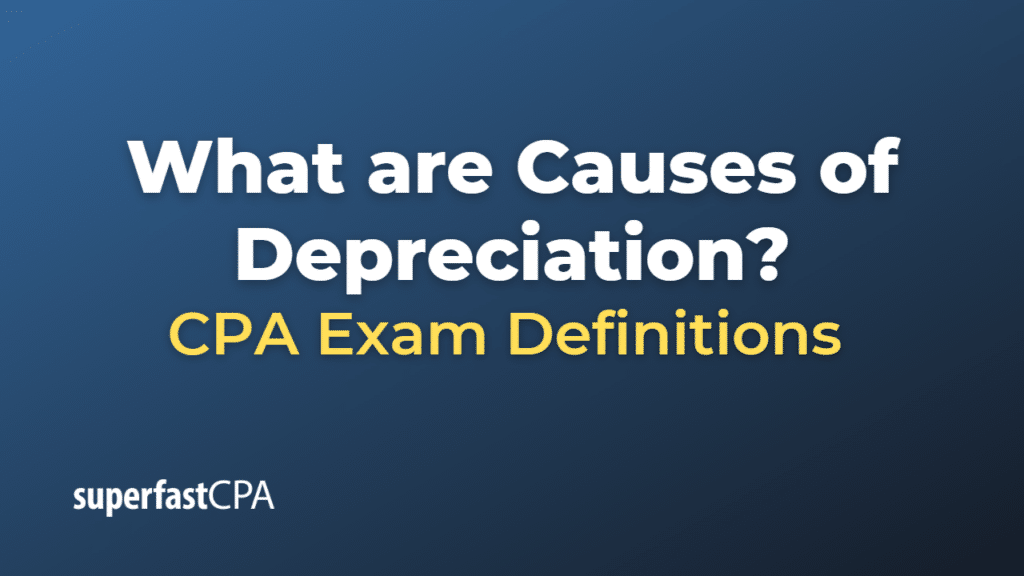Causes of Depreciation
Depreciation is the reduction in the value of an asset over time due to various factors. The main causes of depreciation are:
- Wear and Tear: The most common cause of depreciation is the normal wear and tear an asset experiences during its useful life. As an asset is used, its parts may wear out, become damaged, or become less efficient, which reduces its overall value.
- Obsolescence: Technological advancements can render an asset obsolete. As new, more efficient, or advanced technology becomes available, older assets may become less valuable or no longer useful.
- Economic Factors: Changes in the economy, such as inflation or fluctuations in market demand, can impact the value of an asset. For example, if the demand for a certain product decreases, the value of the machinery used to produce that product may also decline.
- Legal and Regulatory Factors: Changes in laws and regulations can also lead to depreciation. For example, if new environmental regulations require businesses to upgrade their equipment, the value of the old equipment may decrease.
- Natural Disasters: Events such as fires, floods, earthquakes, or other natural disasters can cause physical damage to an asset, reducing its value.
- Time: Some assets, like patents and licenses, have a limited useful life that is determined by the duration of their legal protection. As time passes, these assets lose value as they approach the end of their useful life.
It’s essential for businesses to account for depreciation in their financial statements to allocate the cost of an asset over its useful life accurately. This ensures that the business accurately reflects the asset’s value and allocates the cost of using the asset as an expense over time.
Example of Causes of Depreciation
Let’s consider an example of a delivery truck purchased by a company.
- The company buys a delivery truck for $50,000 with an estimated useful life of 10 years.
- The truck’s estimated salvage value (the value of the truck after 10 years) is $5,000.
In this scenario, we can observe the causes of depreciation for the truck:
- Wear and Tear: As the truck is used for daily deliveries, its engine and other components will experience wear and tear, causing its value to decrease over time.
- Obsolescence: Over the 10-year period, more fuel-efficient or electric trucks might be introduced to the market, making the older truck less desirable and less valuable due to its higher operating costs and lower efficiency.
- Economic Factors: Economic changes, such as fluctuations in fuel prices, might affect the truck’s value. If fuel prices rise significantly, the value of the truck might decrease because it becomes more expensive to operate.
- Legal and Regulatory Factors: If new emissions regulations are introduced, the company might be required to upgrade the truck’s engine or exhaust system, or the truck might become obsolete due to its inability to comply with the new regulations.
- Natural Disasters: If the truck is damaged in a natural disaster, such as a flood, its value will decrease due to the damage sustained.
Now, considering the truck’s initial cost, salvage value, and useful life, the company can calculate the annual depreciation expense using the straight-line depreciation method:
Annual Depreciation Expense = (Initial Cost – Salvage Value) / Useful Life
Annual Depreciation Expense = ($50,000 – $5,000) / 10 years
Annual Depreciation Expense = $4,500
This means that the company will record a depreciation expense of $4,500 each year for the truck, reflecting the decrease in its value over its 10-year useful life.













